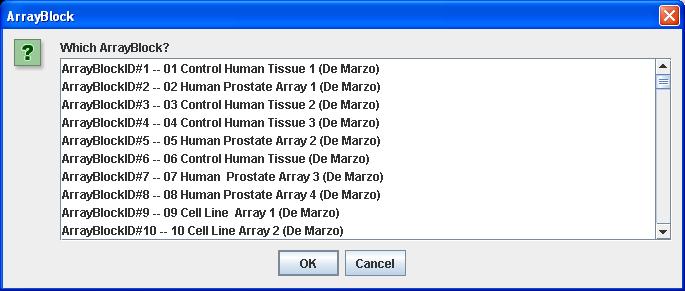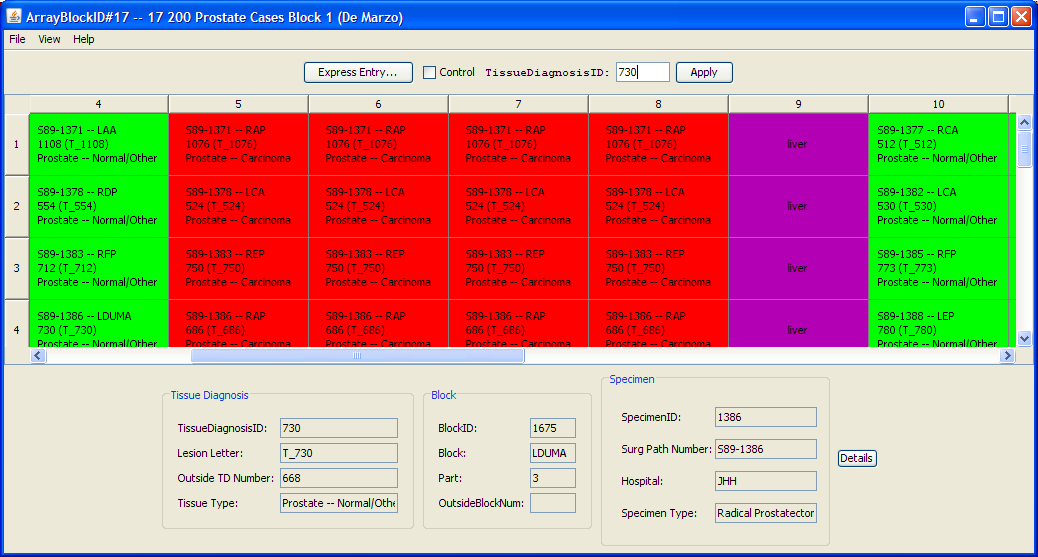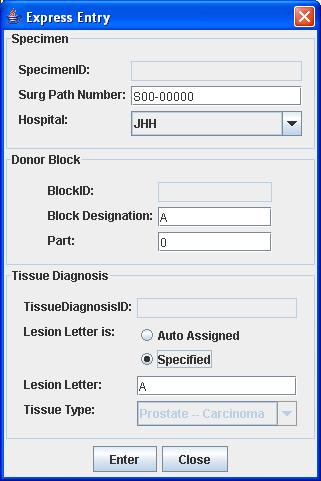
 |
| A List of ArrayBlocks from which
the user can pick. |
 |
| The main screen of the
ArrayBuilder application. |
 |
| The Express Entry Dialog |
| Entered
Values: Surg Path Number: S00-00000 Hospital: JHH Block Designation: A Part: 0 Tissue Type: Prostate Assigned Values: TissueDiagnosisID:999 LesionLetter=V-1 |
Entered
Values: Surg Path Number: S00-00000 Hospital: JHH Block Designation: A Part: 0 Tissue Type: Prostate Assigned Values TissueDiagnosisID:999 LesionLetter=V-1 |
Entered
Values: Surg Path Number: S00-00000 Hospital: JHH Block Designation: A Part: 0 Tissue Type: Bladder Assigned Values TissueDiagnosisID:1000 LesionLetter=V-2 |
Entered
Values: Surg Path Number: S00-00000 Hospital: JHH Block Designation: A Part: 0 Tissue Type: Bladder Assigned Values TissueDiagnosisID:1000 LesionLetter=V-2 |
© Copyright 2009 | All Rights Reserved | The Johns Hopkins University